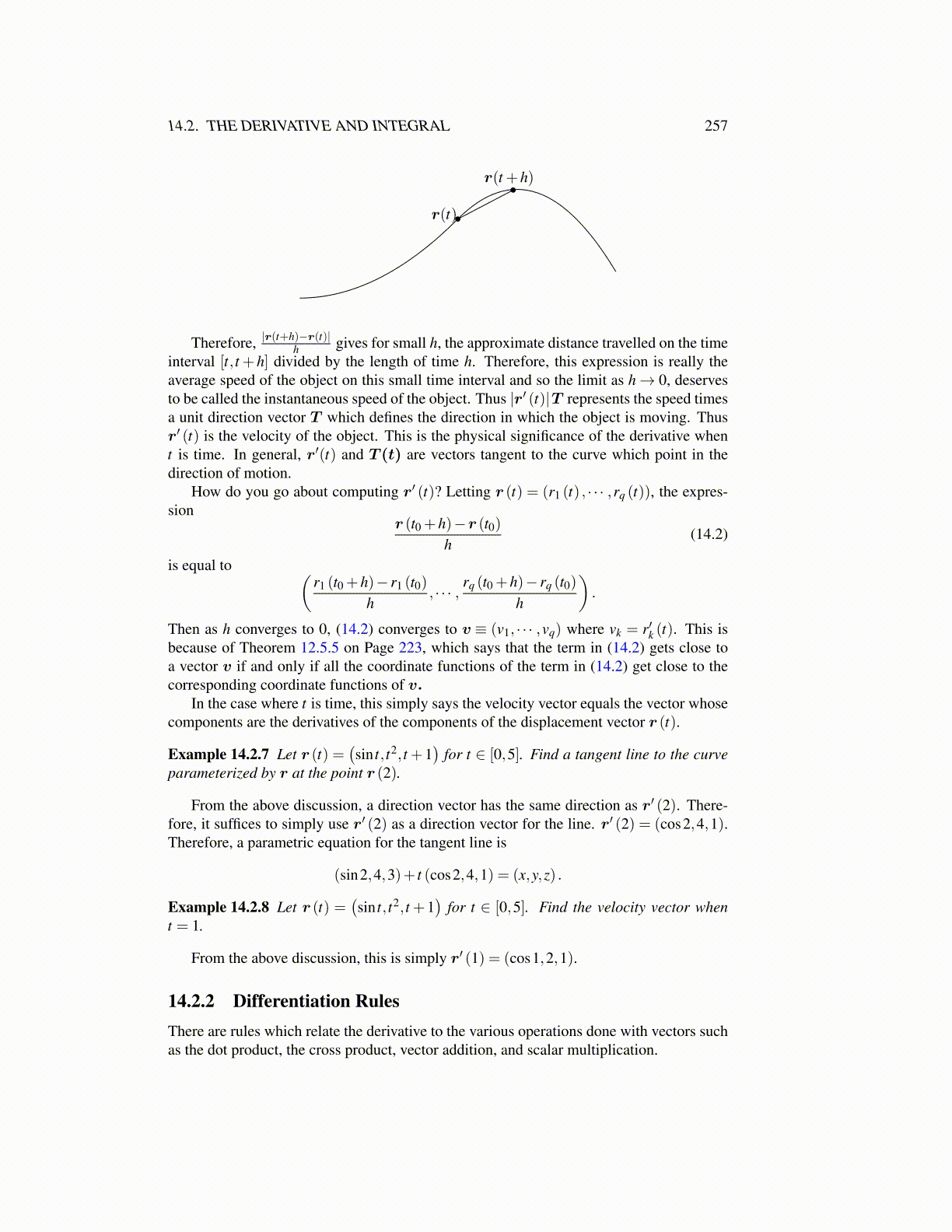
14.2. THE DERIVATIVE AND INTEGRAL 257
r(t)
r(t +h)
Therefore, |r(t+h)−r(t)|h gives for small h, the approximate distance travelled on the time
interval [t, t +h] divided by the length of time h. Therefore, this expression is really theaverage speed of the object on this small time interval and so the limit as h→ 0, deservesto be called the instantaneous speed of the object. Thus |r′ (t)|T represents the speed timesa unit direction vector T which defines the direction in which the object is moving. Thusr′ (t) is the velocity of the object. This is the physical significance of the derivative whent is time. In general, r′(t) and T (t) are vectors tangent to the curve which point in thedirection of motion.
How do you go about computing r′ (t)? Letting r (t) = (r1 (t) , · · · ,rq (t)), the expres-sion
r (t0 +h)−r (t0)h
(14.2)
is equal to (r1 (t0 +h)− r1 (t0)
h, · · · ,
rq (t0 +h)− rq (t0)h
).
Then as h converges to 0, (14.2) converges to v ≡ (v1, · · · ,vq) where vk = r′k (t). This isbecause of Theorem 12.5.5 on Page 223, which says that the term in (14.2) gets close toa vector v if and only if all the coordinate functions of the term in (14.2) get close to thecorresponding coordinate functions of v.
In the case where t is time, this simply says the velocity vector equals the vector whosecomponents are the derivatives of the components of the displacement vector r (t).
Example 14.2.7 Let r (t) =(sin t, t2, t +1
)for t ∈ [0,5]. Find a tangent line to the curve
parameterized by r at the point r (2).
From the above discussion, a direction vector has the same direction as r′ (2). There-fore, it suffices to simply use r′ (2) as a direction vector for the line. r′ (2) = (cos2,4,1).Therefore, a parametric equation for the tangent line is
(sin2,4,3)+ t (cos2,4,1) = (x,y,z) .
Example 14.2.8 Let r (t) =(sin t, t2, t +1
)for t ∈ [0,5]. Find the velocity vector when
t = 1.
From the above discussion, this is simply r′ (1) = (cos1,2,1).
14.2.2 Differentiation RulesThere are rules which relate the derivative to the various operations done with vectors suchas the dot product, the cross product, vector addition, and scalar multiplication.